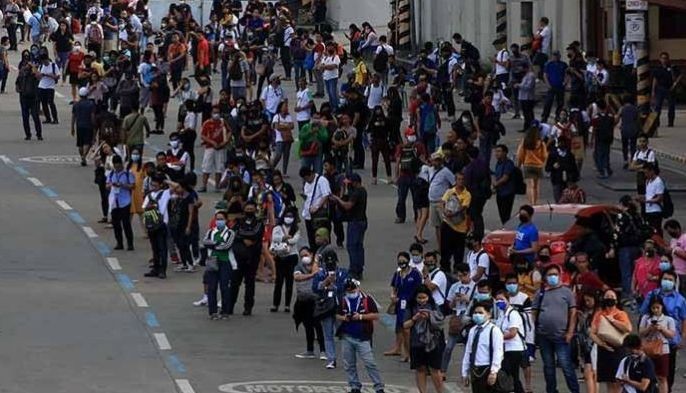MANILA, Philippines — A road plan along EDSA containing some of the wishes of a typical commuter was unveiled by the transport department on Friday, but implementation remains murky with the program’s budget yet to be identified, all while the government’s budget leeway narrows by the day.
The Department of Transportation (DOTr)'s plan, uploaded on Facebook, involved the reconfiguration of the 23.8-kilometer EDSA to construct bike and bus lanes, pedestrian crossings and bus boarding areas in the highway. The plan is part of a bigger blueprint on public transport for areas under general community quarantine where Metro Manila will be placed starting June 1.
But while social media users, including transport planners, applauded the plan, project timelines appear to be tight with the two-phase approach completed within the month of June. Worse, when Philstar.com reached out, transport officials did not specify how much the entire project would cost or if there were budgets earmarked to fund them.
“Budget would come from the agencies,” Transport Assistant Secretary Goddes Hope Libiran said in a text message, without going into specifics.
In a relayed message through Libiran, Transport Undersecretary Garry de Guzman said “available budgets of our attached agencies” would be used to fund the supposed “modernization” projects for Metro Manila’s road network.
That would, however, be a problem. Budget data showed the transport agency suffered an P8.8-billion cut in its P99.4-billion outlay for the year, a direct result of government’s belt-tightening measures to ensure fund availability for the coronavirus disease-2019 (COVID-19) outbreak.
As of April, 87.8% or P79.6 billion of the remaining P90.6-billion budget after the cut had already been released to the agency, meaning it can use those funds to enter into contracts with private contractors for potential services. Of the released amount, P15.9 billion had already been deemed spent through issued checks.
Where are the funds?
De Guzman stressed agencies under DOTr, which include the Land Transportation Office and Land Transportation Franchising and Regulatory Board, are free to request “augmentation” of their budgets from the department. Requests, in turn, will be forwarded to the Department of Budget and Management.
It remains unclear if the EDSA projects, as well as the entire road network plan, will be considered as part of the government’s COVID-19 response to which most public funds had been redirected since March 24 when the Bayanihan to Heal As One Act was enacted.
As of May 28, DOTr was not among the agencies that secured some of the P353.86 billion in cash allocations for COVID-19 programs, and as it is, the government’s budget leeway is fast depleting. “We just have to prioritize and target well the measures for COVID-19,” Budget Undersecretary Laura Pascua said in a Viber message.
New EDSA?
As it is, the EDSA plan looks massive. Apart from hard infrastructure of bike and bus lanes, cashless payment systems for fares will also be installed, while bus re-routing will also be instituted. The latter alone would require coordination over hundreds of bus of companies whose vehicles ply EDSA.
The budget is also crucial to construct 11 bus stations under the first phase from June 1-21 and 15 more along EDSA in the second phase from June 22-30.
DOTr’s transport plan for EDSA came after the Metropolitan Manila Development Authority, which is in charge of the National Capital Region’s traffic policies, abruptly installed bike lanes in EDSA on Sunday as part of a supposed “dry-run” for the World Bicycle Day on June 3.
But MMDA, at the time, stressed a long-term plan for bike lanes would take some time.


